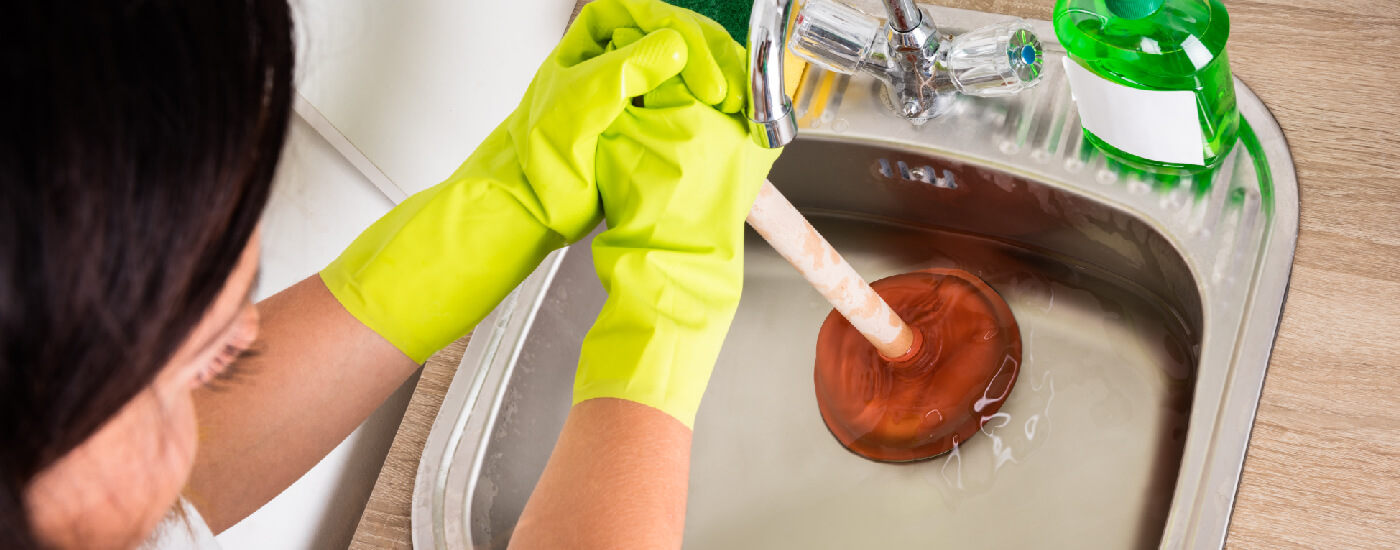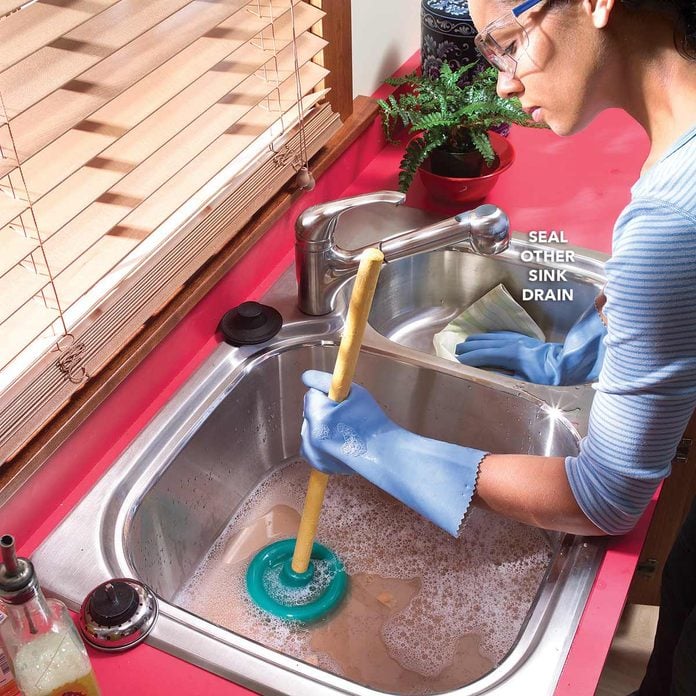Using Plungers and Drain Cleaner: Efficient Techniques
Using Plungers and Drain Cleaner: Efficient Techniques
Blog Article
We've encountered this post pertaining to How to Unclog Your Sink with a Plunger below on the net and thought it made good sense to write about it with you here.

Intro
Correct upkeep of family drains is crucial for preventing blockages and making sure smooth water flow. Among the secret devices in every home owner's toolkit is the bettor, along with different drainpipe cleaners made to take on stubborn obstructions successfully. This post explores how to utilize plungers and drainpipe cleansers efficiently to keep your drains flowing openly.
Area 1: Comprehending Bettors
Types of Plungers
There are a number of kinds of plungers readily available, each made for various types of drains and obstructs. One of the most usual types consist of mug bettors, flange bettors, and accordion plungers.
Just How Plungers Job
Bettors deal with the concept of developing pressure and suction to displace clogs. When correctly applied over a drain, they develop a vacuum cleaner that can pull out particles or separate obstructions.
Choosing the Right Bettor
Selecting the ideal plunger depends upon the kind of drain and the nature of the obstruction. Mug bettors are optimal for sinks and tubs, while flange bettors are much better matched for commodes because of their layout.
Common Errors with Plungers
Staying clear of these errors ensures effective plunging: inappropriate seal around the drainpipe, insufficient pressure, and not clearing surrounding particles.
Section 2: Utilizing Plungers Efficiently
Preparation
Before diving, ensure the bettor covers the drainpipe completely and develops a limited seal. Clear any type of noticeable particles around the drain opening.
Method
Begin with gentle plunging activities to build suction. Boost pressure progressively, utilizing a steady rhythm. Repeat as required till the drain gets rid of.
Troubleshooting Tips
If diving does not work, try readjusting the seal, using petroleum jelly for a better seal, or utilizing a different kind of plunger.
Area 3: Recognizing Drain Cleansers
Types of Drain Cleansers
Drain pipes cleansers can be chemical or chemical. Chemical cleaners use solid chemicals to dissolve clogs, while chemical cleaners make use of all-natural enzymes to break down organic matter.
Exactly How Drain Cleaning Company Work
Chemical cleaners react with obstructions to liquify them, while enzymatic cleaners break down natural materials like hair and oil without damaging pipelines.
Security Factors to consider
Always use handwear covers and eye security when utilizing chemical drainpipe cleansers. Make sure sufficient ventilation and comply with supplier guidelines thoroughly.
Eco-Friendly Alternatives
Take into consideration utilizing vinegar and baking soda or enzyme-based cleansers for eco-friendly choices that are more secure for pipelines and the atmosphere.
Section 4: Using Drain Cleaners Successfully
Application Strategies
Put chemical cleaners straight into the drain opening. Allow them to benefit the recommended time prior to purging with hot water. Chemical cleansers should rest over night.
Preventative measures
Prevent mixing various sorts of cleansers, as this can create hazardous fumes. Never ever make use of chemical cleaners in conjunction with a bettor, as spilling can take place.
Taking Care Of Stubborn Obstructions
For relentless obstructions, take into consideration using a pipes serpent or calling a specialist plumbing technician to stop damages to pipelines.
Verdict
In conclusion, understanding how to utilize bettors and drainpipe cleansers effectively is necessary for maintaining healthy plumbing systems. By choosing the right devices and strategies, home owners can deal with minor clogs and prevent major pipes problems down the line.
How to Use a Plunger to Unclog a Drain
The humble plunger is a simple yet effective tool for breaking clogs in sinks, tubs and toilets. This handy tool is easy to use. You can make the most of its power if you understand how it works. Ready to dive in? Here’s what you need to know.
Safety First!
Never use a plunger with drain chemicals. Water will splash as you work, and the chemicals can spatter, burning skin and eyes. It’s a good idea to use rubber gloves and wear safety goggles when you work on a clog.
Choose the Right Tool for the Job
Plungers come in two different styles. Sinks, bathtubs and showers require a cup plunger. Like its name suggests, the rubber end is shaped like a cup. Use a flange plunger on toilets. These plungers have a rubber funnel extending from the cup. A plunger needs to be big enough to cover the drain.
Ready, Set, Plunge!
Coat the rim: Coat the plunger rim with petroleum jelly. This helps make a better seal.
Block outlets: Hold a wet rag over nearby outlets such as the overflow vent or the drain in a second sink.
Release air: Insert the plunger at an angle into the water. Water will displace air in the cup. A water-filled cup is more forceful than one filled with air.
Keep the plunger upright: Hold the plunger perpendicular to the drain. Use fast, forceful strokes, but make the first stroke gentle. The first stroke can create a splash if the cup still contains air. Thrust the plunger 15 to 20 times.
Snap off the plunger: The final stroke should be a strong upward motion that ends when the plunger snaps off the drain.
Repeat the process: you may need to repeat this sequence several times. When the water drains away, your work is done. High-five! https://plumbernw.com/blog/how-to-use-a-plunger-to-unclog-a-drain/

Application Strategies
Put chemical cleaners straight into the drain opening. Allow them to benefit the recommended time prior to purging with hot water. Chemical cleansers should rest over night.
Preventative measures
Prevent mixing various sorts of cleansers, as this can create hazardous fumes. Never ever make use of chemical cleaners in conjunction with a bettor, as spilling can take place.
Taking Care Of Stubborn Obstructions
For relentless obstructions, take into consideration using a pipes serpent or calling a specialist plumbing technician to stop damages to pipelines.
Verdict
In conclusion, understanding how to utilize bettors and drainpipe cleansers effectively is necessary for maintaining healthy plumbing systems. By choosing the right devices and strategies, home owners can deal with minor clogs and prevent major pipes problems down the line.
How to Use a Plunger to Unclog a Drain
The humble plunger is a simple yet effective tool for breaking clogs in sinks, tubs and toilets. This handy tool is easy to use. You can make the most of its power if you understand how it works. Ready to dive in? Here’s what you need to know.
Safety First!
Never use a plunger with drain chemicals. Water will splash as you work, and the chemicals can spatter, burning skin and eyes. It’s a good idea to use rubber gloves and wear safety goggles when you work on a clog.
Choose the Right Tool for the Job
Plungers come in two different styles. Sinks, bathtubs and showers require a cup plunger. Like its name suggests, the rubber end is shaped like a cup. Use a flange plunger on toilets. These plungers have a rubber funnel extending from the cup. A plunger needs to be big enough to cover the drain.
Ready, Set, Plunge!
Coat the rim: Coat the plunger rim with petroleum jelly. This helps make a better seal. Block outlets: Hold a wet rag over nearby outlets such as the overflow vent or the drain in a second sink. Release air: Insert the plunger at an angle into the water. Water will displace air in the cup. A water-filled cup is more forceful than one filled with air. Keep the plunger upright: Hold the plunger perpendicular to the drain. Use fast, forceful strokes, but make the first stroke gentle. The first stroke can create a splash if the cup still contains air. Thrust the plunger 15 to 20 times. Snap off the plunger: The final stroke should be a strong upward motion that ends when the plunger snaps off the drain. Repeat the process: you may need to repeat this sequence several times. When the water drains away, your work is done. High-five! https://plumbernw.com/blog/how-to-use-a-plunger-to-unclog-a-drain/

Do you appreciate reading about Here's How to Correctly Use a Toilet Plunger? Try to leave a comment directly below. We will be glad to find out your views about this content. Hoping that you come back again in the near future. Sharing is good. Helping others is fun. Thank-you for your time invested reading it.
Pricing Report this page